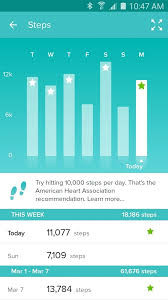Like many Americans I received a Fitbit for Christmas – more specifically the Fitbit Charge HR.
My initial reaction was that the wearable was an expensive digital pedometer with a number of features that I wouldn’t use. That initial assessment was correct; however, two months later, I’m still using it and see value in a few of the features.
For me the most important take-aways were:
• I needed to get more sleep.
• I overestimated my level of activity at times.
• At times I was more active than I realized.
• Instead of guess, the Fitbit was a tool that recorded by activity.
The Fitbit had features that I didn’t like or didn’t use, as follows:
• At times the counter for the number of stairs climbed was inaccurate.
• The virtual badges motivate some people, but they don’t motivate me.
• As a competitive athlete, I am interested in competing against myself. At this time I don’t feel the need to compete against others. I didn’t find the challenge feature to be valuable.
• The software provides options to input food and water consumption. This is a reasonable option; however, it is also one that seems to be too time consuming.
After several weeks of using the Fitbit, the following counters met my needs:
• Steps taken
• Active minutes of exercise
• Calories burned
• Amount of sleep
The software seemed to do a reasonable job of accurately tracking my level of activity in these areas.
Initially I thought the step counter and the measurement of active minutes would be the most valuable features. After about six weeks I realized they were one-dimensional measures of activity.
Like any step counter, a step is a step. The Fitbit did not discriminate whether I was running, walking, riding my stationary bike, or playing tennis. (And I couldn’t wear my Fitbit playing volleyball).
Likewise the active minutes feature measured a 30-minute walk through the candy and pastry aisles at King Soopers the same as 30 minutes of intense play on the tennis court.
For my current purposes, the most valuable feature measures the number of calories burned. The feature is useful because it seems to indirectly account for the time and intensity of the activity I participated in.
This feature helped me identify the level of calories I had to burn each day to maintain a desired level of weight. With that goal in mind, it became easy to identify activities that would burn the required number of calories.
The most important Fitbit feature tracks the daily amount of time a person sleeps each night. The device showed me that I’m grossly shortchanging myself in this critical area.
The software tracks the amount of sleep, the amount of restless sleep, and the amount of times a person was not sleeping (to let the dogs out in the middle of the night or to do other things).
In my case, it was necessary for me to experiment with the Fitbit and customize it to my needs. Most likely the same will hold true for others.
The Fitbit provides basic fitness data in a simple, easy to understand manner. By doing so, many Fitbit users can use it to achieve a higher level of fitness.